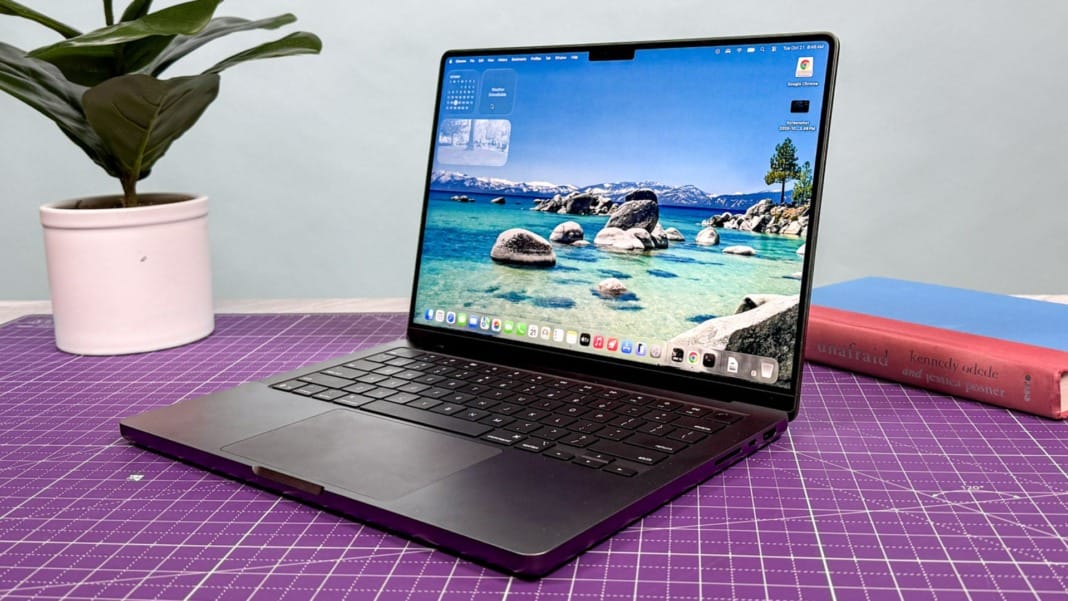Apple has introduced the latest MacBook Pro powered by the new M5 chip, offering performance and battery life enhancements that many users expected. At first glance, the new model appears almost identical to its predecessor. However, a closer look reveals a subtle but meaningful internal design change that has caught the attention of repair specialists. According to a recent teardown by iFixit, the updated 14-inch and 16-inch versions provide more direct access to the central battery cells, marking a step towards improved repairability.
Easier access to battery components
Previously, replacing the battery in Apple’s MacBook Pro models required removing the trackpad, adding extra time and complexity to what should be a straightforward task. In the new M5 models, iFixit discovered that users can now reach the pull-tabs securing the central battery cells without first removing the trackpad. This means that one of the most commonly replaced components in a laptop can now be serviced with fewer steps and potentially lower repair costs.
Apple has also updated its repair documentation to include clearer instructions on disconnecting the Battery Management System cable. This adjustment signals an effort to make the repair process safer and more accessible. By addressing a common pain point, Apple is acknowledging long-standing criticism regarding the difficulty of repairing its devices.
Despite this improvement, Apple continues to sell only a full “top case with battery and keyboard” replacement kit for more than US$500. There is currently no option to purchase a standalone battery directly from Apple, limiting the cost savings that easier access could otherwise offer.
Impact on long-term device ownership
Battery lifespan is a crucial part of owning a laptop, especially for users who rely on their MacBook Pro for work and keep it for several years. As batteries age, they lose capacity, leading to shorter usage times and increased heat. Improving access to the battery can help users extend the device’s functional life without replacing the entire machine.
The M5 MacBook Pro still receives a modest 4/10 repairability score from iFixit, though this marks progress compared to earlier generations. While the device’s internal structure has changed only slightly, the new design reduces the number of steps required to reach the battery. It provides a clearer path for independent and third-party repair technicians.
This development reflects a small but meaningful response to the growing right-to-repair movement. Users now face less inconvenience and potentially lower labour costs, particularly if they choose to work with non-Apple technicians. However, Apple’s continued focus on selling full assemblies rather than individual components shows that the company still intends to retain control over the repair ecosystem.
Performance concerns remain despite design improvements
While the battery redesign is seen as a positive shift, the new MacBook Pro M5 is not without concerns. YouTuber Max Tech has reported signs of thermal throttling under heavy workloads, raising questions about whether the single-fan cooling system is sufficient to deliver the M5 chip’s performance. Users who frequently run demanding applications may want to monitor performance, particularly under sustained load, closely.
Bad news for the M5 MacBook Air..
— Vadim Yuryev (@VadimYuryev) October 23, 2025
The single fan on the new M5 MacBook Pro is NOT keeping up, leading to thermal throttling of the M5 chip in Cinebench 2024.
Single to Multi-core score ratio:
M4: 5.38x
M5: 5.07x
Apple, PLEASE give us 2 fans!
Link to full video below 👇 pic.twitter.com/lGmTSJjPRQ
The return to easier servicing suggests that Apple may be moving gradually toward more repair-friendly designs. The next major milestone will likely be the availability of a standalone battery kit through Apple’s Self Service Repair Store. If that happens, it would represent a more significant step towards improving MacBook maintenance and affordability.





